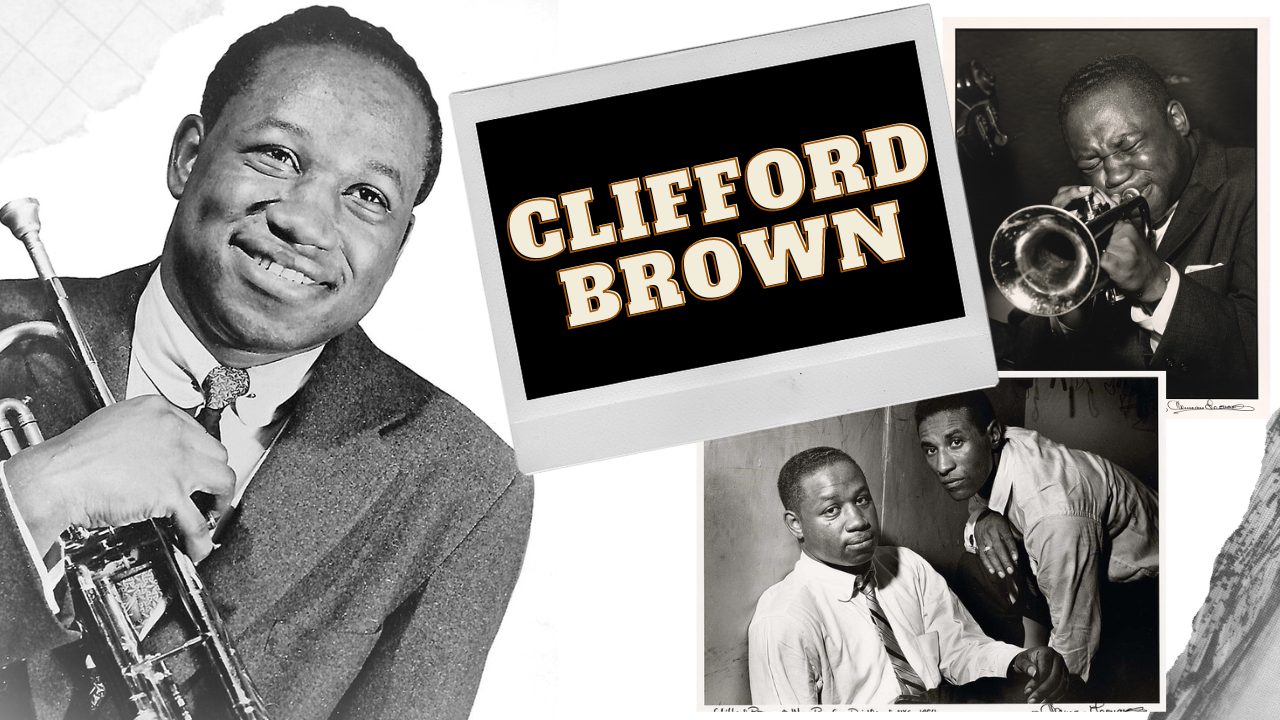Despite his short life and career, Clifford Brown entered the history of music as one of the most influential and talented American jazz trumpeters with a distinctive lyrical and expressive playing style, clear sound and impressive technique. Apart from his achievements as a trumpeter, he also wrote music and played the piano. Additionally, he significantly contributed to the hard-bop movement. In this article, we will explore Clifford Brown’s life and contribution to music.

Clifford Brown: The Start of His Career
Born in Delaware in 1930, Clifford Brown started to demonstrate his musical talent during his school years. First, he was a member of a vocal quartet, organized by his father, where he sang together with his brothers.
At the age of ten, Clifford started to play the trumpet, inspired by his father’s trumpet. Three years later, his father bought him a trumpet and provided private trumpet lessons. Clifford studied at the Maryland State College, and then he entered Delaware State University. During his study at the university, he frequently visited Philadelphia and regularly performed there. Clifford was also a member of the jazz-oriented Maryland State Band.

His main sources of inspiration were bebop pioneers like Dizzy Gillespie and Fats Navarro. Their music encouraged him on his personal artistic journey. Clifford skills didn’t stay unnoticed, especially thanks to his clean, clear tone and improvisational abilities.
Clifford Brown: Collaborations
In summer 1950, he had a car accident and during his stay at the hospital he was visited by Gillespie, who motivated him to become a professional musician. Because of that incident, he couldn’t play the musical instruments, so he was inactive for a year.
Two years later after the incident Brown had an opportunity to record with an R&B group, The Five Blue Flames. His next artistic collaboration was with Tadd Dameron in 1953. The same year Clifford also joined Lionel Hampton’s band with which he toured across Europe from August to December.
Clifford also collaborated with West Coast musicians and the Art Blakey quintet. With the latter, he recorded solos for their album during a live performance at the Birdland jazz club.
In 1954, together with drummer Max Roach, Clifford founded the Brown-Roach Quintet, which was considered as one of the most noticeable jazz bands of the postwar era. They did their music in a rented studio in California. The fact that Brown was also able to play the piano perfectly complemented Max Roach’s drum skills that allowed musicians to experiment with instruments. They were one of the first bands, playing hard bop. Actually, this quintet with Max Roach was the powerful starting point for Brown’s further success that made him an influential jazz figure.

Together with Max Roach, Clifford released several classic albums, including “Clifford Brown & Max Roach"(1954) and "Study in Brown" (1955), which were warmly welcomed by critics. The album "Clifford Brown & Max Roach" featured two tracks (“Daahoud" and “Joy Spring”) that later became jazz standard. This album was honored with induction into the Grammy Hall of Fame in 1999.
The quintet existed until Clifford’s life was tragically cut shot in the car accident in 1956, when he was only 25. Despite such a tragic end, his role in jazz genre can’t be underestimated. He inspired famous musicians such as Lee Morgan, Donald Byrd, and Freddie Hubbard, and continues to inspire contemporary trumpeters.
Clifford Brown’s Style
Clifford’s playing style featured a full-bodied, warm sound with the vibe of bop-ish style and his personal improvisations. He demonstrated great skills in melodic ballads and rapid jams. His style was full of maturity with the clear influence of Fats Navarro. Drawing inspiration from such an influential figure, he didn’t mimic him however developed his own solo form with rich tones, engaging all the trumpet’s range. Clifford Brown’s style included parts in high registers, high rhythmic patterns, and extensive use of grace notes. His improvisations stood out thanks to the melodic features, flowing in extended passages.
Conclusion
Clifford Brown is one of the most influential trumpeters of his generation, whose lyrical aspects of music inspired many trumpeters. Fans of jazz consider him on the same level as other iconic musicians.
Do you want to discover more interesting facts and information about other jazz musicians? In our blog, you can find articles about Freddie Hubbard, Bobby Shew, Clark Terry, Wynton Marsalis and more.



 https://kgumusic.com/pages/about-us
https://kgumusic.com/pages/about-us